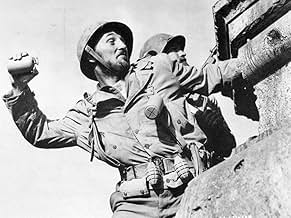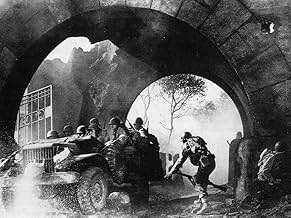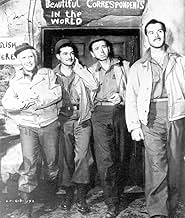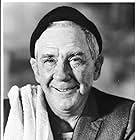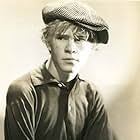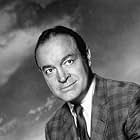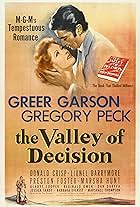IMDb RATING
7.2/10
3.9K
YOUR RATING
At the close of WWII, Pulitzer Prize-winning war correspondent Ernie Pyle travels with the U.S. Army's Company C Division during their liberation of Italy.At the close of WWII, Pulitzer Prize-winning war correspondent Ernie Pyle travels with the U.S. Army's Company C Division during their liberation of Italy.At the close of WWII, Pulitzer Prize-winning war correspondent Ernie Pyle travels with the U.S. Army's Company C Division during their liberation of Italy.
- Nominated for 4 Oscars
- 2 wins & 8 nominations total
John R. Reilly
- Private Murphy
- (as Jack Reilly)
William Murphy
- Private Mew
- (as Bill Murphy)
William 'Billy' Benedict
- Pvt. Whitey
- (uncredited)
Michael Browne
- Sergeant
- (uncredited)
Bob Hope
- Bob Hope (Voice on Radio Program)
- (voice)
- (uncredited)
Kenneth Kendall
- Extra
- (uncredited)
Yolanda Lacca
- Amelia, Italian Girl
- (uncredited)
Barney Noto
- Staff Sergeant Barney Noto
- (uncredited)
Tito Renaldo
- Lopez
- (uncredited)
Dick Rich
- Sergeant at Showers
- (uncredited)
William Self
- Pvt. Cookie Henderson
- (uncredited)
Storyline
Did you know
- TriviaThe extras in the film were real American GIs, in the process of being transferred from the war in Europe to the Pacific. Many of them were killed in the fighting on Okinawa--the same battle in which Ernie Pyle was killed by a Japanese machine gunner--never having seen the movie in which they appeared.
- GoofsThe unit Pyle is with--the 18th Infantry Regiment, 1st Infantry Division--never fought in the Italian campaign. After the Sicilian campaign ended, it was brought back to England and began training for the D-Day invasion in Normandy. The 1st Division would eventually spearhead the assault on Omaha Beach.
- Quotes
Pvt. Dondaro: If this War don't kill me first, my feet will.
- Crazy creditsThere are absolutely no credits at the end of the film, not even the words "The End".
- ConnectionsEdited from San Pietro (1945)
- SoundtracksSilent Night
(uncredited)
Music by Franz Xaver Gruber
Lyrics by Joseph Mohr
Sung by Elfie Mayerhofer on Decca Record
Featured review
The term "G.I. Joe" has become so closely associated with the image of a certain toy that it is now largely forgotten that it was originally coined to describe the ordinary American foot soldier. Likewise, it is now largely forgotten just exactly who Ernie Pyle was and what he meant to the American people and, more especially, to the ordinary soldiers about whom he wrote.
My father took a photograph of Ernie Pyle in the Pacific in 1945, shortly before Pyle was killed. At the time Pyle was surrounded by a mob of admiring G.Is. You'd have thought they were in the presence of Bettie Grable or Rita Hayworth rather than a short, balding, middle aged newspaper-man. When Pyle was killed in action a few days later while accompanying the infantry, the solders erected a monument at the place where he died. On it were engraved the words, "On this spot the 77th Division lost a buddy", and they really meant it. It's inconceivable that troops today would do anything like that for one of the current crop of CNN-generation reporters.
The reason isn't hard to fathom. Most war correspondents hung around the rear echelon, hobnobbing with the general staff and forwarding dispatches from headquarters, and they still do. Pyle, on the other hand, lived with and wrote about the common infantrymen who were actually fighting the war. He ate their food, drank their coffee and shared their hardships through three grueling years of war from North Africa through Sicily to the European mainland, and then later on in the Pacific, where he was killed. Pyle became the spokesman for the common soldiers, and all their families back home read his syndicated column. There simply wasn't anybody else like him then, and there hasn't been since.
Small wonder that William Wellman, himself a combat veteran, thought that this movie needed to be made. The filmmaker had tremendous respect for his subject, and it shows. For example, that poignant last scene is, almost word for word and image for image, straight out of one of Pyle's most famous dispatches. It would have been interesting to learn what Pyle thought of this film. Unfortunately, however, by the time it was released the Pulitzer Prize-winning reporter was already dead.
My father took a photograph of Ernie Pyle in the Pacific in 1945, shortly before Pyle was killed. At the time Pyle was surrounded by a mob of admiring G.Is. You'd have thought they were in the presence of Bettie Grable or Rita Hayworth rather than a short, balding, middle aged newspaper-man. When Pyle was killed in action a few days later while accompanying the infantry, the solders erected a monument at the place where he died. On it were engraved the words, "On this spot the 77th Division lost a buddy", and they really meant it. It's inconceivable that troops today would do anything like that for one of the current crop of CNN-generation reporters.
The reason isn't hard to fathom. Most war correspondents hung around the rear echelon, hobnobbing with the general staff and forwarding dispatches from headquarters, and they still do. Pyle, on the other hand, lived with and wrote about the common infantrymen who were actually fighting the war. He ate their food, drank their coffee and shared their hardships through three grueling years of war from North Africa through Sicily to the European mainland, and then later on in the Pacific, where he was killed. Pyle became the spokesman for the common soldiers, and all their families back home read his syndicated column. There simply wasn't anybody else like him then, and there hasn't been since.
Small wonder that William Wellman, himself a combat veteran, thought that this movie needed to be made. The filmmaker had tremendous respect for his subject, and it shows. For example, that poignant last scene is, almost word for word and image for image, straight out of one of Pyle's most famous dispatches. It would have been interesting to learn what Pyle thought of this film. Unfortunately, however, by the time it was released the Pulitzer Prize-winning reporter was already dead.
- robertguttman
- Dec 19, 2008
- Permalink
- How long is Story of G.I. Joe?Powered by Alexa
Details
- Release date
- Country of origin
- Languages
- Also known as
- Ernie Pyle's Story of G.I. Joe
- Filming locations
- Iverson Ranch - 1 Iverson Lane, Chatsworth, Los Angeles, California, USA(marching through countryside just before the "baptism of fire.")
- Production company
- See more company credits at IMDbPro
Box office
- Budget
- $1,000,000 (estimated)
- Runtime1 hour 48 minutes
- Color
- Aspect ratio
- 1.37 : 1
Contribute to this page
Suggest an edit or add missing content


